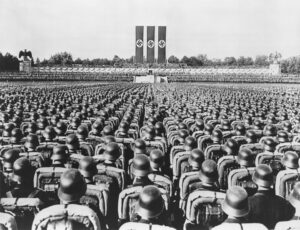
Why are they called recessions?
Because maybe calling them “depressions” would be too dramatic and frightening? I’m not sure I’m even joking right now, as right after the Great Depression, a term that was once considered milder than “crisis”, using the term “depression” for an economic downturn was suddenly seen as too terrifying. So economists decided to use the term “recession” instead. So now, “depression” is used to define a very sharp and intractable slump, but there’s no formal definition of the term in economics.
The Pandemic Recession also included some levels of unemployment that haven’t existed since way before WWII. The 2007-09 stagnation had many uncomfortable similarities to the Great Depression, which involved financial crisis, high unemployment, and even falling prices for goods and services. Economists are now calling it “The Great Recession”.
What really makes an official recession?
As I said before, someone SHOULD be in charge of deciding whether it’s a slump or not, right? Well, apparently the Business Cycle Dating Committee of the National Bureau of Economic Research (NBER) is that “special” someone.
Two-quarters of consecutive GDP contraction is the usual shorthand for a slump, but the NBER actually needs much more indicators to understand when stagnation begins and when it ends. Even more, GDP isn’t the committee’s favorite indicator, because it rather prefers domestic production and employment.
Other crucial signs of slumps might include declines in real (inflation-adjusted) manufacturing, but also wholesale-retail trade sales and industrial production. Lengthy declines in production, employment, real income, and various other indicators can contribute to a recession call.
How long do these recessions usually last?
So, according to the stats, the average length of the “typical” recession that goes all the way back to 1857 is less than 17.5 months. Stagnations have been shorter and less difficult since the days of the Buchanan administration.
The long-term average might have included the 1873 slump, which is a kidney stone of a downturn that lasted 65 months. It could have also included the Great Depression, which lasted 43 months. If we look at the period that followed since World War II, stagnations have become less harsh, lasting only an average of 11.1 months.
Usually, that’s because bank failures no longer mean that you lose your life savings, and that’s apparently thanks to the Federal Deposit Insurance Corporation because the Federal Reserve has gotten better at managing the country’s money supply.
How often do recessions happen?
Since 1857, a slump reappeared, on average, every three-and-a-quarter years. The government used to believe that letting recessions burn themselves out was the best solution for everyone who was concerned about this.
But since World War II, we have gone an average of 58.4 months between stagnations, or almost five years. The last economic expansion, which started at the end of the Great Recession, lasted 128 months. By that measure, we were bound to live an economic retraction when the Pandemic Recession hit.
When was the most difficult recession?
The slump of 1873 was also known as the Great Depression until the 1929 stagnation kicked in. The recession started with panic after Jay Cooke & Company, one of the major banks back then, completely failed.
The event caused nothing less but a chain reaction of bank failures all over the country and the fall of a bubble in railroad stocks. As a response, the New York Stock Exchange shut down for 10 days. The recession ended in 1877.
What’s the absolute worst effect of a recession?
An old economist joke says that a recession is when someone else lost their job, and a depression is when you lost your job. As you can imagine, very few economists have actually transitioned to stand-up comedy.
Your job is your prime source of income, that’s why it is absolutely mandatory to have a couple of months’ salary in cash, as an emergency fund, especially since jobs are harder to come by in a time of stagnation.







